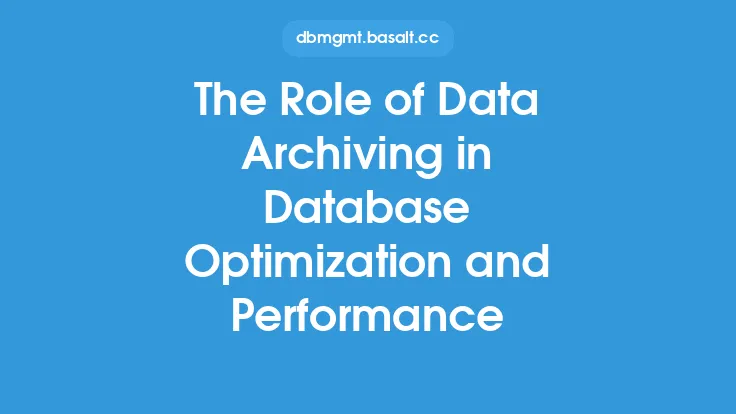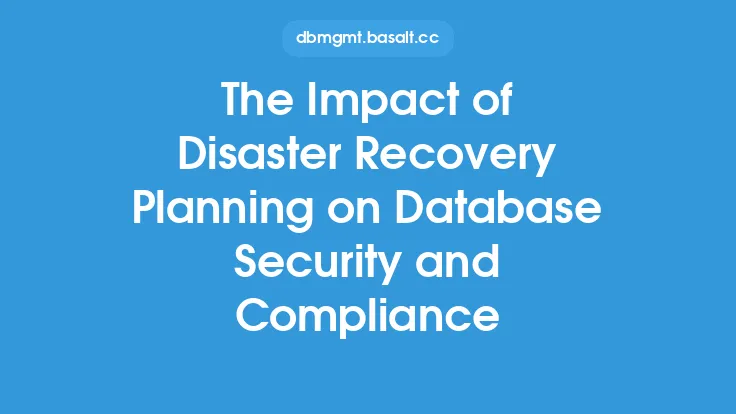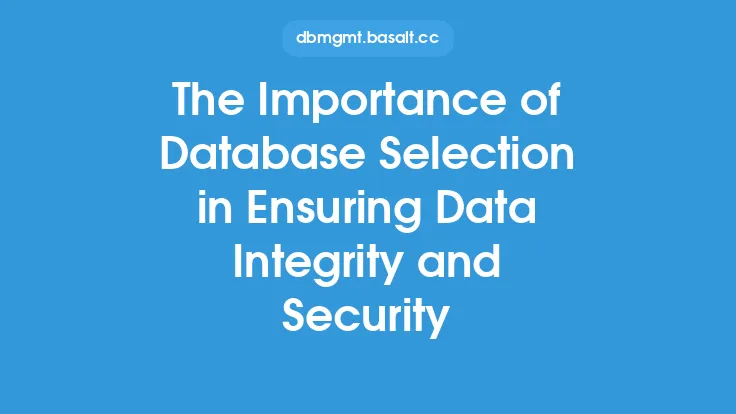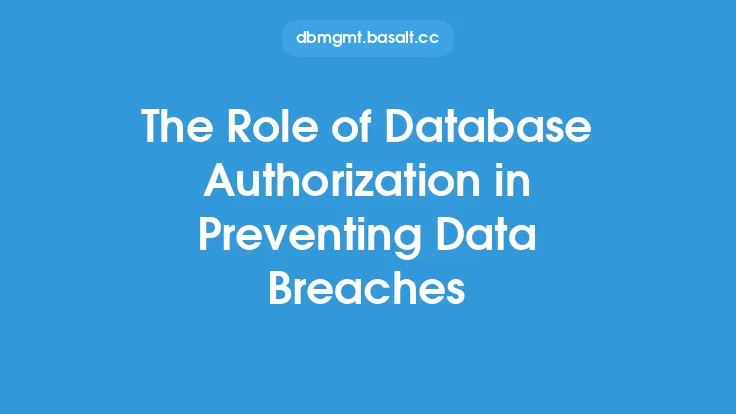Database compliance is a critical aspect of database administration, and it involves ensuring that databases are designed, implemented, and managed in accordance with relevant laws, regulations, and industry standards. One key aspect of database compliance is data masking, which plays a crucial role in protecting sensitive data and preventing unauthorized access. In this article, we will delve into the world of database compliance and explore the role of data masking in ensuring the security and integrity of databases.
Introduction to Data Masking
Data masking is a technique used to hide or obscure sensitive data, making it unreadable to unauthorized users. This is typically done by replacing sensitive data with fictional or anonymized data, which can be used for testing, development, or other purposes without compromising the security of the original data. Data masking is an essential component of database compliance, as it helps to prevent data breaches and protect sensitive information from being accessed by unauthorized users.
Types of Data Masking
There are several types of data masking techniques, each with its own strengths and weaknesses. Some of the most common types of data masking include:
- Static data masking: This involves masking data at rest, typically in a production database. Static data masking is often used to protect sensitive data from being accessed by unauthorized users.
- Dynamic data masking: This involves masking data in real-time, typically in a production database. Dynamic data masking is often used to protect sensitive data from being accessed by unauthorized users, while still allowing authorized users to access the data.
- On-the-fly data masking: This involves masking data as it is being transmitted or processed, typically in a production database. On-the-fly data masking is often used to protect sensitive data from being intercepted or accessed by unauthorized users.
Benefits of Data Masking
Data masking offers several benefits, including:
- Improved security: Data masking helps to protect sensitive data from being accessed by unauthorized users, reducing the risk of data breaches and cyber attacks.
- Compliance: Data masking helps organizations to comply with relevant laws and regulations, such as the General Data Protection Regulation (GDPR) and the Payment Card Industry Data Security Standard (PCI DSS).
- Reduced risk: Data masking helps to reduce the risk of data breaches and cyber attacks, by making it more difficult for unauthorized users to access sensitive data.
- Increased flexibility: Data masking allows organizations to use masked data for testing, development, and other purposes, without compromising the security of the original data.
Data Masking Techniques
There are several data masking techniques, each with its own strengths and weaknesses. Some of the most common data masking techniques include:
- Substitution: This involves replacing sensitive data with fictional or anonymized data.
- Encryption: This involves encrypting sensitive data, making it unreadable to unauthorized users.
- Hashing: This involves using a hash function to transform sensitive data into a fixed-length string of characters.
- Tokenization: This involves replacing sensitive data with a token or placeholder, which can be used to retrieve the original data.
Implementing Data Masking
Implementing data masking requires careful planning and execution. Some of the key steps involved in implementing data masking include:
- Identifying sensitive data: This involves identifying the sensitive data that needs to be masked, such as personal identifiable information (PII) or financial data.
- Selecting a data masking technique: This involves selecting a data masking technique that is suitable for the type of data being masked.
- Implementing data masking: This involves implementing the data masking technique, using tools such as data masking software or scripts.
- Testing and validation: This involves testing and validating the data masking implementation, to ensure that it is working correctly and effectively.
Challenges and Limitations
While data masking is an effective technique for protecting sensitive data, it is not without its challenges and limitations. Some of the key challenges and limitations of data masking include:
- Data quality: Data masking can affect the quality of the data, making it more difficult to use for testing, development, or other purposes.
- Performance: Data masking can impact the performance of the database, particularly if the data masking technique is complex or resource-intensive.
- Complexity: Data masking can be complex to implement, particularly if the database is large or complex.
- Cost: Data masking can be costly to implement, particularly if specialized software or hardware is required.
Best Practices
To get the most out of data masking, it is essential to follow best practices. Some of the key best practices for data masking include:
- Use a combination of data masking techniques: This involves using a combination of data masking techniques, such as substitution, encryption, and hashing, to provide multiple layers of protection.
- Use data masking software: This involves using specialized software to implement data masking, rather than relying on manual techniques or scripts.
- Test and validate: This involves testing and validating the data masking implementation, to ensure that it is working correctly and effectively.
- Monitor and maintain: This involves monitoring and maintaining the data masking implementation, to ensure that it remains effective and up-to-date.
Conclusion
In conclusion, data masking is a critical component of database compliance, and it plays a crucial role in protecting sensitive data and preventing unauthorized access. By understanding the different types of data masking, the benefits of data masking, and the techniques involved, organizations can implement effective data masking solutions that meet their compliance needs. Additionally, by following best practices and being aware of the challenges and limitations of data masking, organizations can ensure that their data masking implementation is effective, efficient, and secure.





